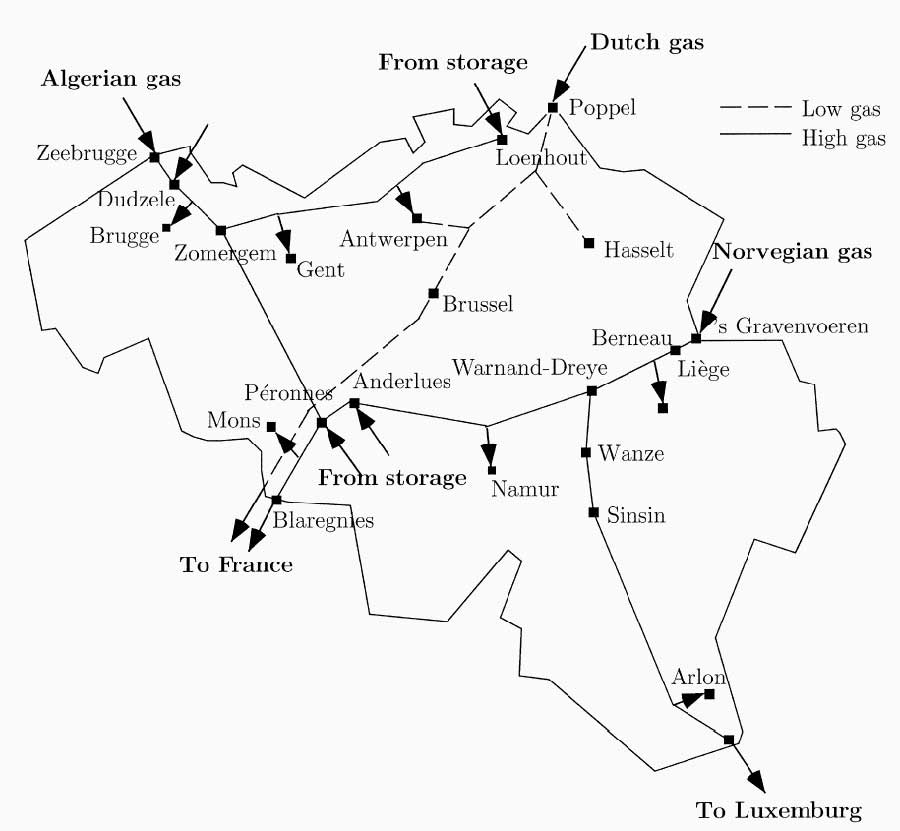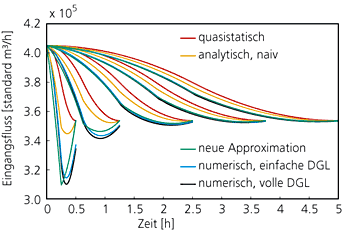

The research work described here represents a contribution to the EU project e_GASGRID. In cooperation with the department of System Analysis, Prognosis and Control, software producing companies, business consultants, equipment suppliers, and network operating companies of the European gas industry, we examine the future demand with respect to tools for data exchange and simulation in a liberalized European gas market which is growing together, and we develop respective concepts.
The gas network operating companies are already applying diverse simulation and optimization software. However, tools for an international coordination, e.g., as planning tools for independent gas selling companies operating on an international scale, or for large-scale deviations necessary after heavy accidents, are almost unavailable yet.
Project Goals
A central problem is that the usual description of gas flow by partial differential equations (1D Navier-Stokes) contains far too many unknowns to be applied as a basis for optimization problems on an all-European scale. The objective is therefore the elimination of pressures and flows along one individual pipeline and their exclusive consideration at those points which are important for planning, i.e., at nodes with gas inlets or outlets, or at nodes where pipelines are divided or where there are active elements, such as compressors.
For a long time now, an analytical relation has already been known between the mass flow through an individual pipeline and the pressures at the inlet and outlet for the stationary case, on the condition of acceptable simplifications (inertia can be neglected compared to friction, isothermal, constant compressibility).
Transient Description necessary
However, especially in the case of balancing problems or for the computation of preparation times in the case of a crisis, a transient description is absolutely necessary. An analytical solution does not exist, and node-based system theoretical models have up to now only been based on relatively naïve approaches with respect to average pressures and flows.
Now, a new model has been established based on an asymptotic development of the pressure gradient for slowly varying boundary pressures, which is not only more exact for the same node distribution, but also defines under which conditions the exactness suffers, and how it can be restored by additional internodes.
